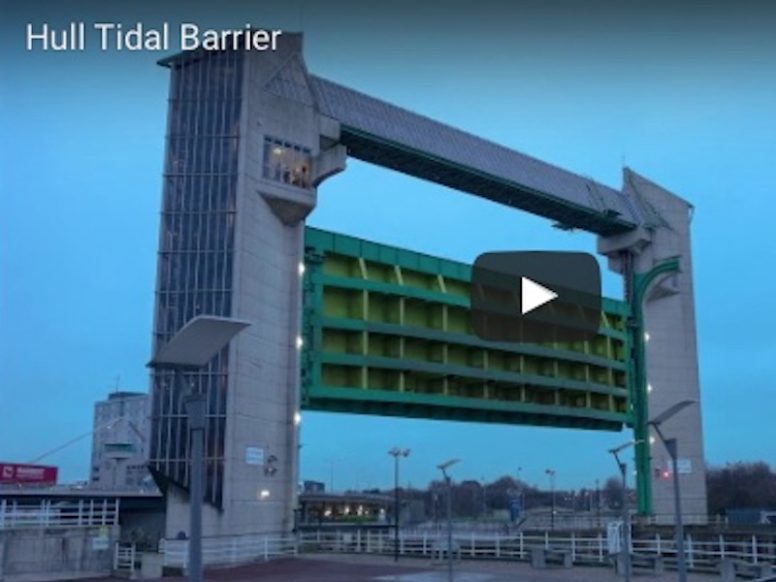Storm Event
Extreme water levels along the east coast
Source
The storm developed offshore of the east coast of the US on 23rd September 1969 and moved northeast towards the UK. The storm approached the UK on 28th September and the central pressure deepened to around 970 mbar. The storm travelled north of Scotland, crossing Scandinavia on 29th September producing strong northerly winds in the North Sea. Meteorological observations showed gusts of 96 knots [50 m/s], 89 knots [46 m/s], and 88 knots [45 m/s] at Dounreay, Wick and Kirkwall, respectively (Eden, 2008).
The storm generated a skew surge of between 0.5 and 1.5 m at many sites on the east coast of the UK. Water levels exceeded the 1 in 5-year return level at 6 sites along the east coast. The highest return period water level was at Immingham and was 43 years. The next largest return period of 39 years was at Holyhead. The highest skew surge was at Lowestoft and was 1.4 m. At Immingham the skew surge was 1.16 m.
We are unaware of any sources describing the wave conditions during this event.
Pathway
Other than reports of the sea wall “swept away” at Whalsay, we are unaware of any further information regarding the flood pathways for this event.
Receptor and Consequence
The worst impacts during this event were experienced in several English east coast towns, from Hull to Great Yarmouth (Met Office, 1969; Hickey, 1997; Zong and Tooley, 2003). In Scotland, this event was associated with localised impacts, with reports focused on Whalsay where the sea wall was “swept away” and one residential property was “completely” destroyed (Hickey, 1997). According to Eden (2008), with a storm surge of between 2 and 2.5 m this was the worst flooding along the east coast since the 1953 disaster. The Times (1969) report the impacts of this event, describing that tides swept over river banks in Hull and inundated a large part of the city to a depth of 3 ft. [0.9 m]. Two of the main bridges over the river Hull were impassable, causing much disruption to traffic. Some non-residential properties were flooded to 2 ft, [0.6 m] and the old towns’ commercial area was cut off entirely. Two electricity transformers caught fire when flood water caused short circuits. The sea level at Hull was reportedly 4 ft. 2 in. [1.2 m] above the predicted 33 ft. 6 in. [10.2 m]. Damage to the value of thousands of pounds was incurred at a fruit market. At Grimsby’s Commercial and Royal docks the tide reached 31 ft. [9.5 m] – the highest since 1953.
Summary Table
| Loss of life | * |
| Residential property | Many properties (both residential and non-residential) were reported to have flooded in Hull |
| Evacuation & rescue | * |
| Cost | * |
| Ports | * |
| Transport | Two of the main bridges over the river Hull were impassable, causing much disruption to traffic |
| Energy | In Hull, two electrical transformers caught fire when flood water caused short circuits |
| Public services | * |
| Water & wastewater | * |
| Livestock | * |
| Agricultural land | * |
| Coastal erosion | * |
| Natural environment | * |
| Cultural heritage | * |
| Coastal defences | The sea wall was “swept away” at Whalsay |
*No known sources of information available
Affected Sites
| Name | Return Period ? | Water Level ? | Tide ? | Skew Surge ? | Date ? |
|---|---|---|---|---|---|
| IMMINGHAM | 43 | 8.55 | 7.34 | 1.21 | 29th Sep 2069 07:00 |
| LOWESTOFT | 39 | 4.21 | 2.68 | 1.52 | 29th Sep 2069 10:00 |
| NORTH SHIELDS | 29 | 6.1 | 5.25 | 0.85 | 29th Sep 2069 05:00 |
| ABERDEEN | 10 | 5.09 | 4.45 | 0.64 | 29th Sep 2069 03:00 |
| DOVER | 8 | 7.68 | 6.85 | 0.82 | 29th Sep 2069 13:00 |
| HARWICH | 8 | 4.95 | 4.13 | 0.82 | 29th Sep 2069 14:00 |
We rely on submissions from the public to maintain these images. If you witnessed this event, please help by uploading your photos.
References
- Eden, P. (2008). Great British Weather Disasters. London: Continuum UK.
- Met Office, (1969). Monthly Weather Report of the Meteorological Office. Monthly Weather Report, 86(9). Available at: http://www.metoffice.gov.uk/learning/library/archive-hidden-treasures/monthly-weather-report-1960s
- Hickey, K.R. (1997). Documentary records of coastal storms in Scotland, 1500-1991 A.D. Coventry University. Available at: https://curve.coventry.ac.uk/open/items/aa6dfd04-d53f-4741-1bb7-bdf99fb153be/1/.
- Zong, Y. and Tooley, M. J. A. (2003). ‘Historical Record of Coastal Floods in Britain: Frequencies and Associated Storm Tracks’. Natural Hazards,29, 13–36. Available at: http://link.springer.com/article/10.1023/A%3A1022942801531 (Accessed: 5 March 2015).
- Eden, P. (2008). Great British Weather Disasters. London: Continuum UK.
- The Times, (1969). ‘Flood chaos in Hull as river swamps streets’. Times Newspapers Limited.


